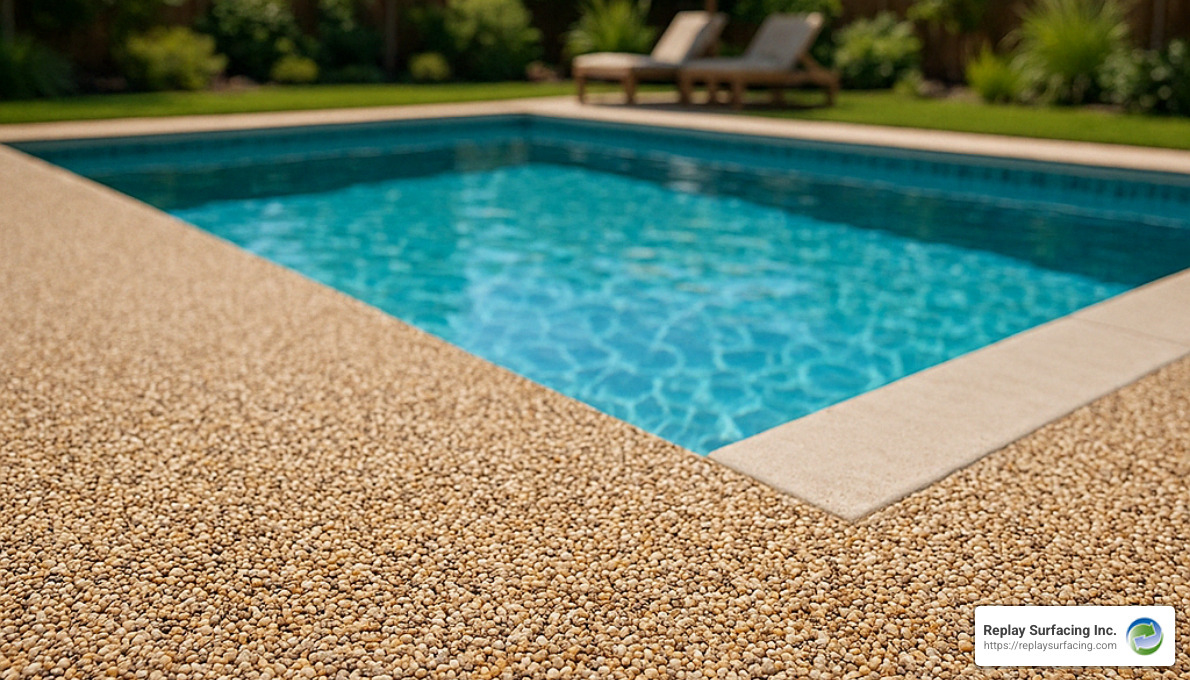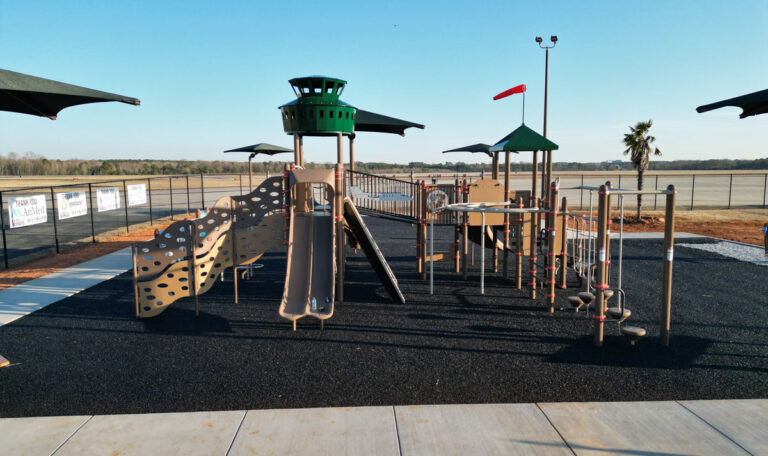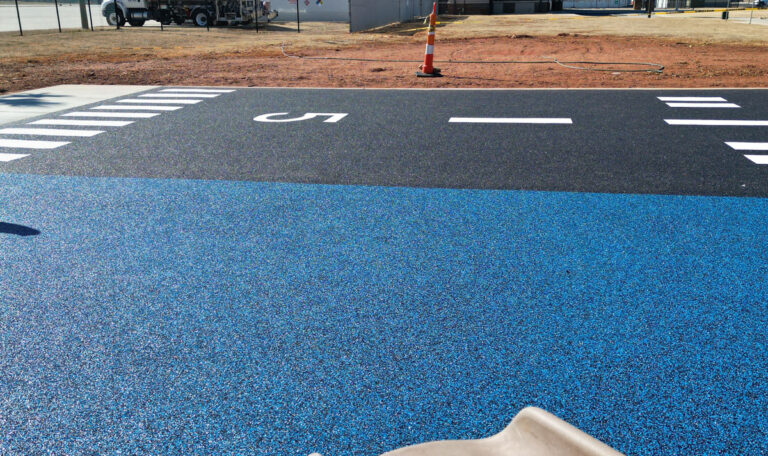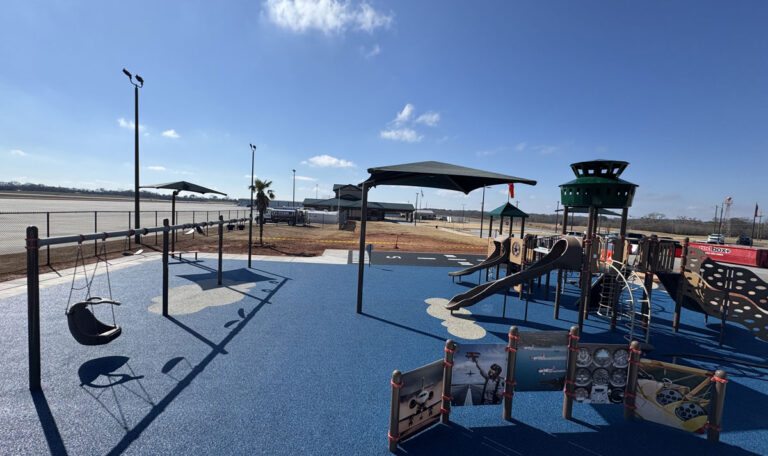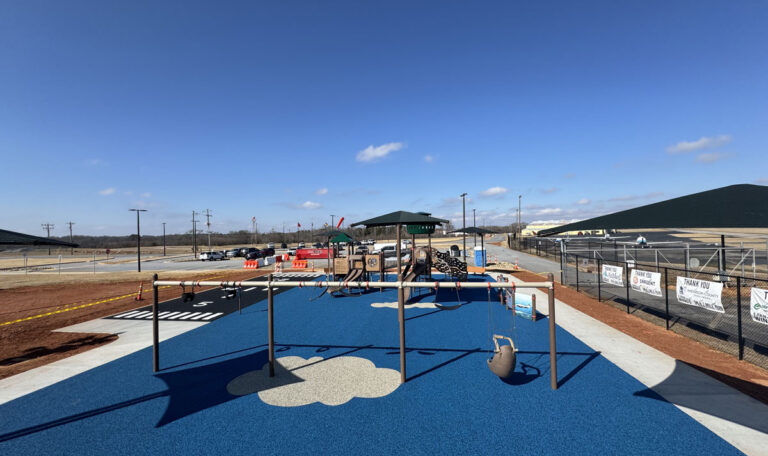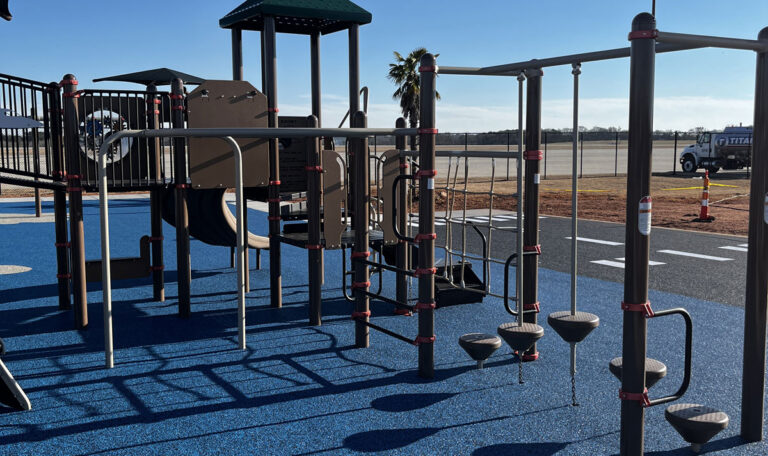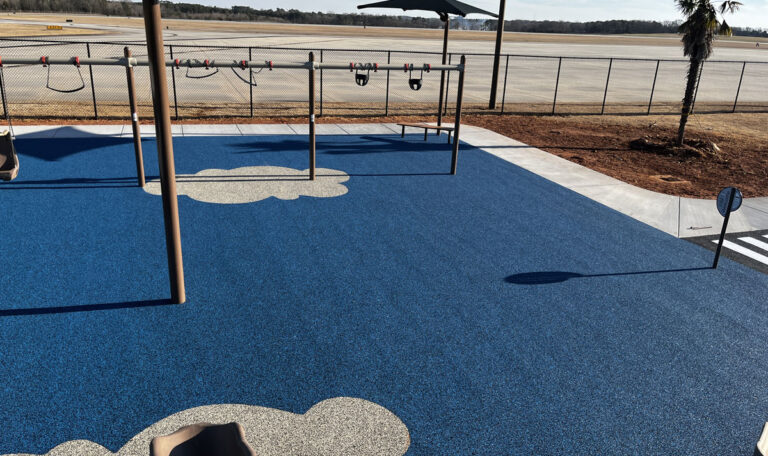Why Rubber Epoxy Pool Deck is Gaining Popularity
A rubber epoxy pool deck is quickly becoming the go-to choice for eco-conscious facility managers looking to improve safety, durability, and aesthetics around swimming areas. Here’s a quick snapshot of why so many are turning to rubber epoxy pool decks:
- Safety First: Extremely slip-resistant even when wet.
- Durability: Resistant to UV rays, chemicals, and extreme temperatures.
- Comfort: Soft underfoot with excellent impact absorption.
- Eco-friendly: Made of recycled materials, reducing your environmental footprint.
- Low maintenance: Easy to clean and upkeep.
At Replay Surfacing, my name is Landon Olson, and I have experience in producing and installing sustainable rubber surfacing solutions, including rubber epoxy pool deck systems. With my background in mechanical engineering, sustainability, and years spent turning recycled tires into innovative surfacing options, I’ve helped numerous facilities dramatically improve their pool deck areas.

Explore more about rubber epoxy pool deck:
– non slip pool deck surfaces
– rubberized deck coating
– pool deck flooring
Understanding Rubber Epoxy Pool Decks
When it comes to changing a pool area, choosing the right decking material is key. If you’ve been hearing the buzz about rubber epoxy pool decks and are curious about what they are and how they work—you’ve come to the right place. Let’s dive right in (pun intended!) and explain this innovative surface, which combines safety, durability, and sustainability into one amazing solution.

What Are Rubber Epoxy Pool Decks?
At its heart, a rubber epoxy pool deck is an advanced surfacing system made from a smart blend of recycled rubber granules and a strong epoxy or polyurethane binding agent. Imagine taking old tires—yes, tires!—and turning them into something beautiful, functional, and environmentally friendly. At Replay Surfacing, each deck we install helps divert hundreds of tires from landfills, and we’re pretty proud of that.
These tiny recycled rubber particles are mixed carefully with epoxy resins or polyurethane binders. Together, they create a tough yet flexible surface that’s soft underfoot and incredibly slip-resistant—even when wet. It’s like getting all the comfort and safety perks of rubber combined with the durability and strength of epoxy.
The quality of this epoxy or polyurethane binder is crucial because it’s what holds the rubber granules securely together and firmly attached to the underlying surface. This means your pool deck stays looking great year after year—rain, shine, splash, or cannonball!
One of our customers, George T., a property manager, shared his experience after installing a rubber epoxy pool deck: “We chose a mixture of 40% brown and 60% black rubber, which is extremely attractive. One of our major office tenants and their clients even call the new coating ‘our million-dollar sidewalk.’ The surface is durable, looks amazing, is as anti-slip as anyone could imagine, and very easy to clean.”
How Do Rubber Epoxy Pool Decks Work?
Installing a rubber epoxy pool deck involves several important steps, and it’s not a simple DIY project. At Replay Surfacing, our professional installation team follows a clear, proven process to make sure your deck performs beautifully for decades.
First up, the existing surface gets some careful attention. We thoroughly clean it, patch any cracks or problem spots, and apply a specialized primer to ensure excellent adhesion. Essentially, we’re prepping the area so the new surface sticks reliably and looks seamless.
Next comes the fun part—mixing! We blend the recycled rubber granules with the epoxy or polyurethane binder right there on-site. Our specialists know exactly how to get the mixture just right. Once ready, we pour and carefully trowel it onto the primed surface, creating a smooth, consistent layer that’s typically around a quarter-inch thick. This thickness ensures enough padding to feel comfortable underfoot, covers minor imperfections, and creates a safe, non-slip finish.
One of the great things about rubber epoxy pool decks is their flexibility—not just literally, but in terms of installation as well. This system easily molds to various shapes and angles—perfect for curved pool edges and steps. Plus, since it’s seamless, you’ll never have to worry about trip hazards or uneven edges.
Finally, after installation, the deck needs about 24 to 48 hours to fully cure (or dry) depending on the weather and humidity. Once cured, you have a tough yet flexible surface that can handle temperature changes and heavy use without cracking or peeling. Think of it as a big rubber band, comfortably expanding and contracting with changing weather conditions.
The bottom line? A rubber epoxy pool deck is a smart, sustainable, and long-lasting solution that beautifully improves any pool area—with safety, style, and comfort all rolled into one.
Learn more about rubber epoxy surfaces and their benefits here:
Benefits of Rubber Epoxy Pool Decking
While first impressions matter—especially when your pool deck looks like it belongs in a resort—the benefits of choosing a rubber epoxy pool deck go far beyond its attractive appearance. Imagine a pool surface that keeps your family safer, stands up to harsh weather, and helps the planet, all at the same time. Sounds pretty good, right?
Here’s how rubber epoxy decks deliver on that promise:
Safety Features
Let’s face it—kids (and, frankly, some adults) don’t always walk carefully around the pool. Even the brightest “no running” signs can’t stop accidental slips and falls entirely. Thankfully, rubber epoxy pool decks are designed with safety as their top priority.
Their secret? A non-slip surface that stays slip-resistant even when it’s soaking wet. This is especially important for families with active kids and seniors who need extra stability. And if someone does fall, the deck’s soft texture helps absorb the impact, reducing the risk of serious injuries. Think of it like having a built-in safety cushion all around your pool.
In fact, many rubber epoxy surfaces meet strict safety and accessibility standards (including ADA guidelines). For public pools, commercial facilities, or schools, this can be a real game-changer.
Wade D., a CPGA Professional who installed a rubber surface at a golf training center, shared his enthusiasm: “It looks great and the color is perfect! When we expand the center, we’ll definitely call you again for more Rubber Stone flooring.”
Durability and Weather Performance
Pool decks take a daily beating. Between scorching summer sun, harsh pool chemicals, and freezing winters, traditional decks often start cracking, fading, or peeling within a few years. Not a good look—or safe for your feet!
A rubber epoxy pool deck, on the other hand, is built for the long haul. It easily tackles UV rays, preventing fading and sun damage. Pool chemicals like chlorine? Not a problem. These surfaces hold strong against chemical wear, keeping their good looks long after installation.
Temperature extremes are no match either. On blistering hot summer days, rubber epoxy stays cooler underfoot than concrete—no more doing that frantic barefoot hop-skip dance. Plus, these decks handle freeze-thaw cycles with ease, expanding and contracting without cracking or peeling.
One impressive example of durability: An installation dating back to 1983 is still holding strong after more than three decades. Now that’s a pool investment worth diving into.
Environmental Sustainability
At Replay Surfacing, we believe in doing right by the planet—and choosing a rubber epoxy pool deck makes a real environmental impact. Here’s how:
Every installation uses recycled tire rubber, which helps tackle the massive waste problem from discarded tires. In fact, each square foot of rubber surfacing uses about 7 pounds of recycled tires—that’s half a car tire per square foot! This means a typical 1,000-square-foot pool deck diverts around 500 tires from landfills. That’s a big win for Mother Earth. If you’d like more information on how tires are recycled, check out Tire recycling on Wikipedia.
Additionally, the impressive durability means you won’t have to replace your deck nearly as often, further reducing waste and resource consumption. And because rubber epoxy surfaces are porous, they help manage water runoff more effectively, minimizing stormwater issues and helping your local environment.
When you choose rubber epoxy decking, you’re choosing sustainability—without sacrificing style, comfort, or safety.

Ready to learn more about safe, durable pool deck options? Check out our guide to Non-Slip Pool Deck Surfaces.
Customization Options and Design Flexibility
One of the best parts about choosing a rubber epoxy pool deck is how creative you can get with your design. Unlike traditional pool decking materials that give you limited options, rubber epoxy lets you express your own style and personality. Whether you’re aiming for something subtle and sophisticated or bold and eye-catching, Replay Surfacing Inc. makes it easy to bring your vision to life.
Variety of Colors and Patterns
With a rubber epoxy pool deck, your design options are practically endless. At Replay Surfacing Inc., we offer a wide array of colors—from bright and cheerful blues and greens that improve the sparkling water of your pool, to calm earth tones and neutrals that blend beautifully with your surrounding landscape.
But you don’t have to stick to just one color. Our expert team can blend multiple shades to create a custom look custom specifically to your space. Want to match your deck to your home’s exterior colors? Easy. Thinking of adding a contrasting border to define the lounging area? We’ve got you covered. You can even use color transitions to separate different zones, like dining, lounging, or play areas.
At Replay Surfacing Inc., we make choosing colors fun and hassle-free. Our specialized Color Mixer tool helps you experiment and visualize different combinations before making your final decision, ensuring your new pool deck perfectly fits your outdoor space.
Beyond simple color blends, you can also get creative with patterns and designs. Geometric shapes, flowing curves, and even simulated tile patterns can be skillfully installed to create a uniquely customized look for your rubber epoxy pool deck.
Incorporating Custom Designs
Want to really stand out? Why not personalize your pool deck with a custom logo, graphic, or even your favorite mascot? Incorporating these unique elements into your rubber epoxy pool deck is a fantastic way to showcase your brand or add personal flair to your outdoor space.
Custom designs are especially popular for commercial and recreational facilities. Hotels and resorts love adding their branding to pool decks to create a memorable guest experience. Community centers, schools, universities, and water parks often incorporate mascots, team logos, or themes into their surfacing to build pride and excitement.
These custom graphics aren’t just painted on top—they’re fully integrated into the rubber epoxy surface. That means they’re just as durable, slip-resistant, and comfortable underfoot as the rest of your deck.
Here’s what one property manager shared about their customized rubber epoxy installation: “We chose a mixture of 40% brown and 60% black rubber, and the result is stunning. Visitors keep complimenting us about how attractive and luxurious it looks—one tenant even calls it our ‘million-dollar sidewalk.’ Plus, it’s extremely durable, incredibly slip-resistant, and super easy to clean.”
The design flexibility of rubber epoxy pool decks even extends to the finish and texture of your surface. Depending on your needs, you can choose from smoother finishes ideal for lounging areas or more textured surfaces to ensure maximum slip-resistance in high-traffic poolside spots. Whatever your preference, Replay Surfacing Inc. can customize the ideal balance of safety and comfort for your pool deck surface.

Find more about how we make your dream designs a reality with our Rubberized Pool Deck Coating.
Comparing Rubber Epoxy to Other Pool Deck Materials
Choosing the right material for your pool deck can make all the difference in safety, comfort, and long-term satisfaction. Let’s explore how rubber epoxy pool decks stack up against traditional alternatives like concrete, wood, and tile. Understanding these comparisons will help you feel confident in making the best choice for your pool area.

Rubber Epoxy vs. Concrete Pool Decks
Concrete has long been a familiar face around pool decks, but despite its popularity, it presents several challenges that rubber epoxy pool decks effectively solve.
One major concern for pool-goers is heat retention. Anyone who has hopped barefoot across hot concrete during summer knows exactly what I mean! Concrete absorbs heat and becomes painfully hot under the sun, often causing discomfort or even minor burns. On the other hand, rubber epoxy surfaces are designed to dissipate heat more effectively, keeping the surface cooler and much friendlier to bare feet—even on the scorching days.
Then there’s the critical issue of slip resistance. Concrete can get slippery when wet, leading to accidents and unwanted trips to the first aid box. While textured concrete surfaces initially provide traction, they tend to wear smooth over time, losing their grip. Rubber epoxy retains its non-slip properties far longer, providing consistent, reliable safety for swimmers of all ages.
Concrete surfaces are also prone to cracking due to shifting ground, temperature fluctuations, and general wear and tear. These cracks aren’t just unsightly—they can become tripping hazards and worsen quickly as water seeps inside. Rubber epoxy, thanks to its flexible nature, gracefully accommodates small movements without cracking or deteriorating, offering peace of mind and a smoother look.
Let’s talk comfort. Concrete surfaces are rigid, hard, and unforgiving on joints and feet, especially after long hours playing or lounging poolside. Rubber epoxy, with its soft yet sturdy texture, provides cushioning underfoot that significantly reduces strain and fatigue. Your feet and joints will thank you!
Finally, there’s maintenance to consider. Concrete decks require periodic sealing, power washing, and ongoing repairs. Rubber epoxy surfaces are naturally resistant to stains and easy to clean—usually a quick rinse or mild soap-and-water solution is all it takes, saving you precious time and effort.
Rubber Epoxy vs. Wood and Tile Pool Decks
While wood and tile offer different aesthetics and might initially seem appealing, they come with their own unique set of challenges when used around pools. Here’s how rubber epoxy pool decks compare:
Wood decking looks charming and natural, but it can quickly become a headache. Wood is notorious for deterioration—splintering, warping, rotting, and fading due to constant water exposure and sun damage. Regular staining, sealing, and significant ongoing maintenance are necessary to sustain its appearance, often leading to high long-term costs.
Even with diligent care, wood pool decks typically only last 10 to 15 years. Contrast that with rubber epoxy decks, which can easily provide 20+ years of performance, and the choice becomes clear.
Slipperiness is another issue with wood. Wet wood decks can feel like ice rinks underfoot, especially if algae or mold start to grow. Rubber epoxy retains its slip-resistant properties year-round, making it significantly safer.
Tile decks offer elegance, but introduce their own frustrations. Tiles can be extremely slippery when wet, raising safety concerns for swimmers. They’re also rigid, which makes them susceptible to cracking with temperature changes or ground shifts. Cracked tiles not only look unattractive, but also pose safety hazards and require costly repairs.
Additionally, grout lines between tiles collect dirt, encourage mold growth, and deteriorate in pool chemical environments. These grout lines quickly become maintenance nightmares. Rubber epoxy avoids this altogether with its seamless, grout-free surface that’s both hygienic and easy to maintain.
Lastly, tiles—especially ceramic and stone—can become blazing hot under intense sun, making them uncomfortable for bare feet. Rubber epoxy’s temperature-regulating properties mean a more comfortable poolside experience.
Summing it all up, here’s a quick overview comparing rubber epoxy to traditional materials:
- Heat Comfort: Rubber epoxy stays cooler underfoot compared to concrete or tile.
- Safety: Consistent slip resistance makes rubber epoxy safer compared to slippery wet wood or tile.
- Durability: Rubber epoxy won’t splinter, crack, or degrade like wood, tile, and concrete often do.
- Maintenance: Rubber epoxy is easy to clean and maintain, eliminating grout problems and regular staining or sealing requirements.
As one property manager said about their rubber epoxy installation, “It’s durable, beautiful, safer than anything else we’ve tried, and ridiculously easy to clean. We wish we’d made the switch sooner!”

If you’re considering upgrading your pool deck, I warmly encourage you to explore the modern, comfortable, safe, and sustainable solution offered by rubber epoxy pool decks. It just might become your new favorite spot outdoors!
Learn more about our sustainable pool solutions at Rubber Pool Deck Surfacing.
Installation and Maintenance of Rubber Epoxy Pool Decks
Installing and maintaining your rubber epoxy pool deck correctly will ensure you enjoy all the safety, comfort, and durability benefits for years to come. Let’s walk through the installation process step by step and cover some simple maintenance tips that will keep your pool deck looking fresh and performing beautifully.

Installation Process Steps
Installing a beautiful and durable rubber epoxy pool deck might look easy, but trust me—it takes experience, skill, and careful attention to detail. Here’s what you can expect during a professional installation:
The first step is surface preparation—and it’s crucial. We need a clean, solid base to make sure your rubber surface bonds well. This usually involves cleaning thoroughly to remove dirt, oil, or anything else that could prevent good adhesion. If there are cracks or damaged areas, we’ll repair those first. Concrete surfaces need about 28 days to cure completely before installation, and wooden decks require sanding and using marine-grade materials to get a reliable bond.
Once the surface is ready, it’s time for mixing components. At Replay Surfacing, we use special UV-stable EPDM rubber granules and high-quality polyurethane binders. Getting the right ratio and consistency is key to ensuring your new pool deck lasts—and that’s where our skilled installers really shine.
Next comes the application process. Our crew carefully pours and trowels the mixture onto the prepared surface. We make sure everything is evenly spread at the right thickness, including any tricky areas like edges or curved pool coping. For larger areas, multiple layers might be applied for extra durability. Our goal is always a smooth, seamless finish without any annoying trip hazards.
After the rubber epoxy mixture is installed, the deck enters the curing phase. Typically, the surface will set enough within 24 hours. We recommend you avoid foot traffic for about 24–48 hours (a great excuse to sit back and relax!). Full curing and maximum strength usually develop within about 7 days. Weather can affect this curing process, so we prefer dry and warm conditions for installation.
Maintenance and Longevity
One of the biggest perks of a rubber epoxy pool deck is how little maintenance it needs compared to traditional decks. With just a few simple steps, your deck can look and function like new for decades.
Most of the time, all that’s needed is a quick sweep or an occasional rinse with your garden hose to keep the surface clean and debris-free. Got a stubborn spot? A little mild soap and water will usually do the trick. You can even use a power washer with a gentle, wide-angle spray once a year if needed—easy peasy!
Accidental spills or stains from sunscreen, drinks, and snacks around the pool are no big deal either. The rubber epoxy surface resists staining, so usually wiping it down with soap and water is enough. No need to panic every time someone spills their lemonade!
If you live in a colder climate, winter care is also simple. Plastic shovels or ice-melt products are safe to use. Avoid sand, as it can clog the surface pores. Your deck will easily withstand freeze-thaw cycles thanks to its flexible, durable design.
To keep your rubber epoxy pool deck looking great year after year, we recommend inspecting the surface annually. Look for any minor damage or worn areas and address them quickly to avoid bigger issues down the road. Some surfaces may benefit from periodic resealing every few years—our experts at Replay Surfacing can help advise you on what’s best for your situation.
With proper installation and simple maintenance, your rubber pool deck can last decades. In fact, some installations from the early 1980s are still in excellent condition today. As Wade D., a CPGA professional who installed rubber surfacing, happily shared after his installation, “It looks great and the color is perfect! When we expand the center, we’ll definitely call you again!”
Installing a rubber epoxy pool deck is an investment that pays off in safety, comfort, and long-term savings. Following these simple care guidelines will help you enjoy your beautiful pool area for many carefree summers ahead.

Learn more about our sustainable and safe rubber epoxy pool deck options:
– Non-Slip Pool Deck Surfaces
– Rubberized Pool Deck Coating
Cost Considerations of Rubber Epoxy Pool Decking
When it comes to upgrading your pool area, a rubber epoxy pool deck can seem like a pricier choice upfront compared to basic concrete or wood. However, when you look at the bigger picture—the long-term savings, easier maintenance, and improved property value—it quickly becomes clear why more pool owners and facility managers are choosing this innovative surfacing option.
Long-Term Value and Investment Returns
Let’s talk honestly about costs. Yes, the initial investment in a rubber epoxy pool deck typically exceeds that of traditional materials like concrete or wood. Several factors can affect the upfront price, including:
- The size of your project: Larger pool decks naturally require more materials and labor.
- Thickness and cushioning: Thicker layers offer better comfort and impact protection, but do add to the cost.
- Design complexity: Custom colors, patterns, logos, or intricate designs can increase the overall expense.
- Condition of your existing surface: If the current base needs extensive repairs or preparation, this may also factor into the cost.
- Your location: Regional differences in labor and materials can affect pricing.
But before you get sticker shock, consider the true long-term savings that come with your investment.
One major advantage of choosing a rubber epoxy surface is its minimal maintenance needs. Think about it—concrete decks require regular sealing, crack repairs, and cleaning. Wood decks need staining, sealing, and eventual replacement due to rot or splintering. Tiles often mean dealing with cracked grout and slippery surfaces. In contrast, a rubber epoxy pool deck is remarkably low-maintenance. You can keep it looking sharp simply by sweeping regularly and washing occasionally with mild soap and water. Goodbye tedious weekend chores!
This ease of maintenance means fewer ongoing expenses. Repairs, when needed, are straightforward and localized. If a section becomes damaged, our team at Replay Surfacing can carefully cut out and reapply a fresh rubber epoxy layer. This targeted approach means you avoid costly total replacements, making repairs practically invisible.
Another significant benefit is the impressive lifespan of a well-maintained rubber epoxy surface. With proper care, your rubber epoxy pool deck can comfortably last 15-20 years or even longer—far outlasting wood and reducing the long-term replacement costs compared to concrete or tile.
Energy savings might not immediately spring to mind, but they’re another hidden bonus of rubber epoxy. Because this surfacing stays cooler than concrete or tile—even in direct sunshine—it helps lower ambient temperatures around your pool area. This means more comfort for your family or guests and potentially less energy spent cooling nearby indoor spaces.
Let’s not forget safety: a slip-resistant, impact-absorbing surface keeps everyone safer. Reduced slipping incidents and softer cushioning mean fewer skinned knees or worse accidents, which can even positively affect liability insurance costs for commercial property owners.
“While the initial installation cost may be higher, the long-term benefits include low maintenance expenses and the added value of a safe, durable surface.”
Finally, a beautiful, durable, and safe pool deck can boost your property’s value. Potential buyers value modern, low-maintenance features, especially in areas designed for family enjoyment. Commercial pools and resorts often see increased customer satisfaction and repeat visitors thanks to comfortable, attractive pool areas.
At Replay Surfacing, we love helping our customers see beyond just the upfront numbers. Our goal is always to create smart surfacing solutions that balance your budget today with your long-term savings and enjoyment. Investing in a rubber epoxy pool deck means fewer headaches, more comfort, and a wise financial choice that pays off year after enjoyable year.
Learn more about the importance of anti-slip rubber surfaces here: The Importance of Having an Anti-Slip Rubber Surface for Pools and Patios
Frequently Asked Questions about Rubber Epoxy Pool Decks
How Long Does a Rubber Epoxy Pool Deck Last?
One of the greatest things about choosing a rubber epoxy pool deck is how long it lasts. With proper installation and regular maintenance, these decks typically provide a solid 8-15 years of reliable performance. But here’s a fun fact: some installations from the early 1980s are still holding up beautifully today—nearly four decades later!
Of course, the exact lifespan of your rubber epoxy deck can vary. Things like installation quality, material grade, usage level, and your local climate all play a role. At Replay Surfacing, we use top-notch UV-stable EPDM rubber granules and premium polyurethane binders to ensure maximum durability.
Regular care makes a big difference, too. Keeping your deck clean and fixing small issues before they grow larger helps preserve its integrity. As one industry pro wisely said, “The best way to keep your pool deck looking great is to rebind it before you even see the holes.”
Is Rubber Epoxy Suitable for All Climates?
Absolutely! Rubber epoxy pool decks are impressively versatile, performing beautifully in just about every climate you can throw at them. Whether you’re dealing with blazing summer heat, harsh winters, or rapid temperature swings, these decks have you covered.
In hot climates, rubber epoxy surfaces stay noticeably cooler compared to concrete, making them more comfortable for bare feet. Some products even lower surface temperatures by up to 38%, offering relief on those scorching summer days. Thanks to UV-resistant materials, you won’t have to worry about fading or cracking from intense sun exposure, and breathability helps the surface stay cooler.
Cold weather is no problem either. Because rubber epoxy is flexible, it naturally expands and contracts without cracking—even through tough freeze-thaw cycles. Plus, the non-slip surface stays safe and stable in wet or icy conditions (though please still try not to ice skate around your pool!).
At Replay Surfacing, we take climate into consideration when recommending products and installation techniques. Whether you’re enjoying sunny southern beaches or snowy northern winters, we’ve got the right rubber epoxy solution for you.
Can Rubber Epoxy Be Applied Over Existing Surfacing?
Yes, one of the great advantages of a rubber epoxy pool deck is its flexibility when it comes to installation. Often, this means you can apply the new surface directly over your existing substrate, saving time, money, and a whole lot of hassle.
Rubber epoxy easily bonds to many common surfaces including concrete, asphalt, paving stones, compacted crushed stone, properly prepared wood, and even tiles in some cases. It’s also perfect for sprucing up an older rubber surface that’s seen better days.
However, not every existing surface is created equal. To get a lasting, attractive finish, careful prep is essential. The underlying surface needs to be structurally sound and clean—free from dirt, oil, or loose debris. Small cracks (up to about 1/8 inch) can usually be repaired during the installation process, but significant structural problems will need to be addressed first.
Applying rubber epoxy over existing surfacing also lets you fine-tune thickness to improve drainage, safety, and comfort. You can smooth out uneven spots and create seamless transitions between different areas. It’s a practical upgrade that really pays off in the long run.
At Replay Surfacing, our experienced team will carefully evaluate your current pool deck to determine the best approach. We’ll walk you through every step, ensuring your new rubber epoxy pool deck is both beautiful and built to last.
Conclusion
Throughout this guide, we’ve explored why rubber epoxy pool decks are quickly becoming the surface of choice for savvy homeowners, property managers, and facility operators. And really, it’s not hard to see why—these decks check all the boxes: safe, durable, attractive, eco-friendly, and comfortable.
Safety might not be the flashiest feature, but it’s certainly one of the most important. Nobody wants to worry about slipping around the pool, whether they’re chasing after excited kids or carrying a tray of fresh lemonade. Rubber epoxy pool decks provide unbeatable slip-resistance—even when wet—and their soft, impact-absorbing surface helps reduce injuries from falls.
But let’s talk durability. Pool areas experience everything—baking sunshine, pool chemicals, heavy use, and winter freezes. Yet, a rubber epoxy pool deck stands up to all these challenges without cracking or fading. With minimal maintenance, your deck stays attractive and functional year after year, giving you more time to enjoy your pool instead of stressing over upkeep.
Let’s not forget the planet, either. Choosing a rubber epoxy pool deck means you’re turning a genuine environmental hazard—old tires—into a sustainable surface solution. At Replay Surfacing, we love nothing more than changing those discarded tires into something useful and beautiful. For every square foot of rubber epoxy decking installed, approximately half a car tire is saved from the landfill. That’s a real win-win.
Design flexibility is another big advantage. Gone are the days of boring, gray concrete poolsides. With an array of colors, patterns, and even custom logos available, your rubber epoxy pool deck can be as vibrant, subtle, or personalized as you’d like. Whether you prefer an neat natural look or something bold and playful, we can help you create your ultimate outdoor oasis.
And let’s be honest—comfort matters. Bare feet appreciate the cooler, softer touch of rubber epoxy. Even on scorching summer afternoons, you won’t need to perform the dreaded “hot-surface-hop” that traditional pool decks can cause.
Of course, investing in a rubber epoxy pool deck does involve a higher initial cost. But when you look at the big picture, the long-term savings are clear. Reduced maintenance, fewer repairs, and a longer lifespan all mean your investment pays off beautifully over the years. Plus, a safer, more attractive pool area can increase your home’s value or boost a business’s customer appeal.
At Replay Surfacing Inc., we take pride in being leaders in sustainable, innovative rubber surfacing solutions. With locations serving Charlotte NC, Columbia SC, Raleigh NC, Sanford NC, Tucson AZ, Connecticut, Indiana, Nashville TN, Beaverton OR, and Lake Charles Louisiana, our experienced team is ready to help you transform your pool deck into something truly special.
Thinking about upgrading your pool area? Our experts at Replay Surfacing would love to chat with you about creating your perfect rubber epoxy pool deck. From design ideas to installation, we’ll guide you every step of the way.
Ready to dive in?
Learn more about Rubber Surfacing for Patios, Pools, Decks, Walkways & Driveways—or simply get in touch today.

